The Ultimate Guide to Keeping Nelson’s Milk Snakes
January 19, 2023
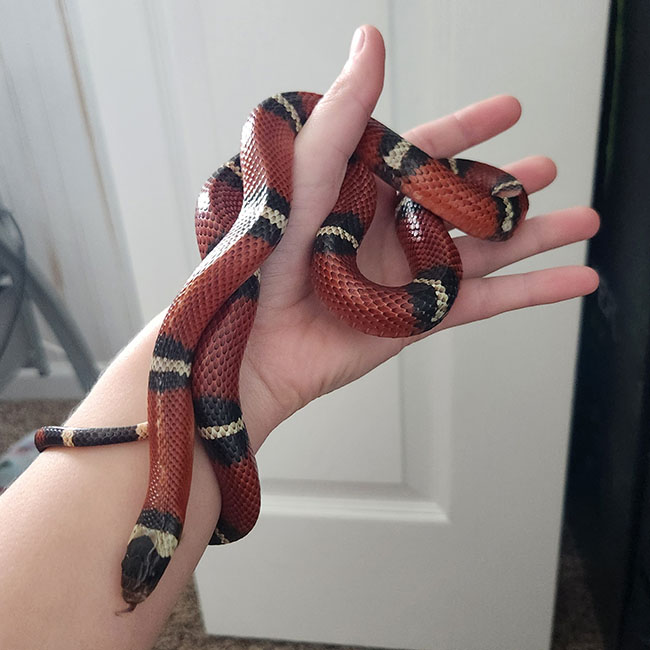
Table of Contents
- Nelson's Milk Snake Enclosure
- Handling your Nelson's Milk Snake
- Feeding your Nelson's Milk Snake
- Nelson's Milk Snake Lighting and Temperature
- Nelson's Milk Snake Humidty
- Nelson's Milk Snake Substrate
- Nelson's Milk Snake Supplies
- Finding a Healthy Nelson's Milk Snake
Caring for your Milk Snake
Nelson’s milk snakes are popular pets due to their easy care, docile behavior, and gorgeous morphs (colors and patterns). They often have an outgoing personality, and enjoy patrolling the perimeter of their enclosure. These milk snakes typically grow to be 42 inches long, and can live to be anywhere between 12 - 20 years in captivity! In nature, they can be found in Mexico, oftentimes hiding in woodlands and rocky areas. Despite their pattern and bright colors, Nelson's milk snakes are not venomous. They use these colors in the wild to mimic coral snakes, and avoid predators.
Nelson’s Milk Snake Enclosure
Nelson’s milk snakes are active snakes that love to explore, and they will need to be provided with enough room to do so. Baby nelson’s milk snakes can be kept in 10 gallon enclosures for a short period of time, however, i recommend putting them straight into their full grown enclosure size. If enough clutter is provided, your snake will not be stressed. For an adult, you will need an enclosure that is 36 x 24 x 18 inches at the minimum, however larger is always better. Milk snakes are escape artists, and therefore, you will want an enclosure that has a secure lid. If your enclosure doesn’t have a secure lid, don't worry, you can buy clamps to hold the lid tightly into place. If you are using clamps, be sure to pull up on the lid after clamping it down to ensure that it is secure. I also highly recommend an enclosure that has front opening doors, such as the exo terra. Front opening doors are beneficial as they allow you to reach for your nelson’s milk snake from the side. This will help your nelson’s milk snake feel more secure.
Never house more than one nelson’s milk snake together with the exception of breeding. They have been known to cannibalize.
How Often Should I Clean My Milk Snake’s Enclosure?
You should check the enclosure for waste daily and spot clean when necessary. Once a month you should do a thorough deep cleaning of your nelson’s milk snake’s enclosure. During this deep cleaning you will want to remove all of the substrate and accessories. Check to see if the accessories are dishwasher safe, if they aren’t you can wash them with dawn dish soap. Be sure to rinse them well and allow them to dry completely. Clean the tank with a diluted bleach water solution, and be sure to thoroughly rinse the tank out and let it dry before adding fresh substrate and putting the accessories back.
Handling your Nelson’s Milk Snake
When you first bring home your milk snake you should place them directly into their enclosure and avoid handling them for a full week while they settle in. If you own other reptiles, you should keep your new milk snake in a different room from them for at least a month, though I recommend a 2-3 month quarantine period. Wash your hands thoroughly after handling your nelson’s milk snake, and before handling any other reptiles you own to prevent the potential spread of disease. To learn how to quarantine a new reptile, check out my article here. If this is your first reptile, then there is no need to quarantine, though I still encourage you to keep them on paper towels for the first month to monitor their droppings, before transitioning them to a permanent substrate.
Once your nelson’s milk snake has had time to settle in, it's important to begin handling them so that they can get used to you. Handle your snake once or twice weekly, but never more than once a day. Too much handling can cause unnecessary stress for your snake. Remember, handling is for you, not your snake —- Snakes don’t get enjoyment from handling. They can benefit from the exercise it promotes and enrichment from new sights and smells though.
Nelson’s milk snakes are fairly docile snakes that rarely bite, but they can bite. Their bites don’t hurt any more than a paper cut, so don’t let it worry you. To avoid bites, try to pick them up by reaching for them from the side, so that they don’t get startled. You should always wash your hands after handling any rodents (this also includes pets such as hamsters) so that they don’t confuse you as food. Never yank your hand away from your nelson’s milk snake if they bite you. They have fragile teeth that can be pulled out easily, which in turn can cause mouth rot. Instead, try running their face under some cold water.
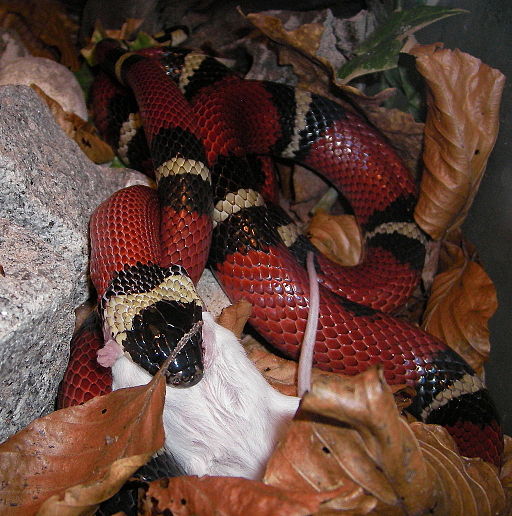
Feeding your Nelson’s Milk Snake
In the wild, nelson’s milk snakes will feed on a variety of rodents, eggs, lizards, and birds. In captivity their diet consists of appropriately sized mice. The size mouse that you feed to your milk snake is dependent on the size of your snake. When in doubt, choose a mouse that is no larger than 1 ½ the size of your snake at its widest point. Baby nelson’s milk snakes will need to eat every 5-7 days, and adults need to eat every 10-14 days.
There is a debate amongst snake owners as to whether you should feed live prey, or frozen thawed prey. I strongly recommend sticking to frozen thawed mice. A live mouse will fight for its life with teeth and claws - which can potentially cause your nelson’s milk snake severe injury. You do not have that risk when feeding pre-killed prey. Frozen thawed mice are easily defrosted. I have an in-depth article on the process here. You should purchase a set of feeding tongs. Feeding tongs reduce your risk of getting bit while feeding your milk snake.
Nelson’s Milk Snake Lighting and Temperature
Milk snakes need a day and night cycle in captivity, just as they would have in the wild. You can help to provide this by placing the enclosure in a room with natural lighting coming in a window. Be sure to place the enclosure away from the window though, sun shining directly into the enclosure can cause temperatures to rise quickly. Although UVB is not absolutely necessary for nelson’s milk snakes, there have been studies showing that it can make them more active and brighten their colors, therefore I use it with mine. Don’t waste your money on any sort of night bulb such as a “red light”. These are unnecessary, and have been known to disrupt their day and night cycle.
Nelson’s milk snakes are cold blooded creatures, meaning they cannot produce their own warmth and instead rely on their surroundings to keep them at the appropriate temperature. The ideal nelson’s milk snake enclosure will have a cool side around 72-80°F and a warm side around 80-85°F. They should also have a basking spot that is around 90°F. You can achieve this by providing them with a heat lamp during the day. The wattage you will need will be determined by the temperature of your house. The warmer the house, the lower the wattage, and vice versa. At night, the temperature in your nelson’s milk snake enclosure can drop to around 70°F. During the night, I provide my milk snake with a heat mat to prevent the enclosure from getting too cold. I place the heat mat under roughly ⅓ of the enclosure. You will need to hook this heat mat to a thermostat to regulate the temperature and keep it from getting too hot.
Nelson’s Milk Snake Humidity
Nelson’s milk snakes need a humidity range between 40 - 60%. This is a lower range when compared to many other reptiles and is easily achievable. To keep track of the humidity levels, you should purchase a hygrometer. These are often overpriced at pet stores, however they can be found on amazon at an affordable price. It is important to keep your milk snake’s humidity within the proper range to prevent health issues. Too high of humidity can cause respiratory infections, and too low of humidity can cause an incomplete shed. There are a few things you can try if your humidity is too low:
Humidity Too Low:
Move the water dish under the heat lamp
Use coconut husk as a bedding - it holds in humidity very well
Cover ⅓ of the lid with tin foil or a damp towel (but if using a towel be sure to change it out and wash it often to prevent the growth of mold)
Add moss to the enclosure
Humidity Too High:
Move the water dish to the cool side of the enclosure
Have a well ventilated enclosure (screen lids are good for ventilation)
Nelson’s Milk Snake Substrate
Substrate is what covers the floor of the enclosure. Choosing a substrate for your milk snake is an important decision. Not all substrates are created equal, and some can actually be harmful to your nelson’s milk snake. I keep my milk snakes on coconut husk. It's excellent at holding in humidity, and it also gives your milk snake the opportunity to burrow. It is not quite as common to find in pet stores as other substrates, but I've never had a problem finding it on amazon. Another great substrate for milk snakes would be aspen shavings. It's cheaper than coconut husk, and is very popular amongst milk snake owners. Also, it is readily available in pet stores. Coconut fiber can also be an excellent choice. It's a loose powdery version of the husk, and gives them even more opportunity to burrow. Coconut fiber will also hold in humidity well. Never use substrates such as pine or cedar. These are both toxic to reptiles and are known to cause respiratory issues.
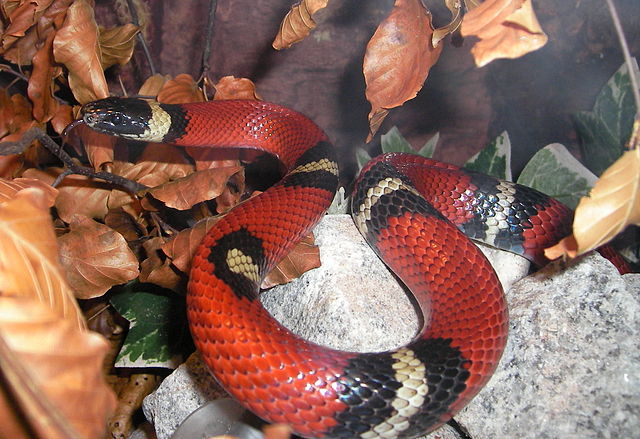
Nelson’s Milk Snake Supplies
We’ve already gone over some of the supplies that a nelson’s milk snake needs such as the enclosure, substrate, and feeding tongs. Those are just the basics - a happy, healthy snake requires much more than that. Let’s talk about other milk snake supplies you’ll need.
Water
You will need to provide your milk snake with a water dish that is large enough to soak in. The dish you choose should be heavy enough that it can’t be flipped. I use ceramic dog dishes for almost all of my snakes. These kinds of dishes come in many different sizes, are heavy, dishwasher safe, and are usually cheaper than the dishes that are made specifically for reptiles. Make sure to change the water in your nelson’s milk snake enclosure every few days, and deep clean it immediately if it becomes dirty. Some snakes prefer to use the bathroom in their water dish.
Hides
Milk snakes may be outgoing and enjoy exploring their enclosure, but they still need dark spaces to curl up and hide in. It is essential to provide your milk snake with at least two hides. One on the hot side of the enclosure, and one on the cool side. This will allow your nelson’s milk snake to comfortably move between sides in its enclosure, and encourage it to thermoregulate. You can always add more than two hides if you’d like as well. When it comes to hides, there are so many options to choose from. You should have no problem finding one that looks nice, while also fitting your milk snakes needs. The hides should not be too big, they should just be slightly larger than your snake, allowing your snake to touch all three sides of the hide when it curls up. I recommend also choosing some that are dishwasher safe to make the deep cleaning process easier.
Milk Snake Decor
It is important to clutter up your nelson’s milk snake’s enclosure to help them feel more secure. Fake leaves, vines, and branches can be excellent ways to do this. Not only will they make your snake feel more comfortable in its environment, but they will also encourage exercise. You don’t have to spend money on branches either, you can use the ones in your backyard. All branches must be sanitized first though so you don’t bring in parasites, bugs, or disease to your milk snake. I have a guide on sanitizing branches for reptiles here.
Finding a Healthy Nelson’s Milk Snake
There are a few things to keep in mind when looking for a healthy nelson’s milk snake. The first is to look for an alert snake with clear, bright eyes, that is actively flicking its tongue. You’ll also want to check the snake for mites and ticks. If you run your hand firmly down the snake's body and feel bumps or raised scales, there is a good chance that it has mites, or another more serious medical condition. You might also see small moving objects on the snake or in its enclosure if it has mites. Make sure that the milk snake doesn't have any loose skin, and that its spine isn't unnaturally defined. This can mean that the snake is underweight, which can mean that it doesn’t eat well. Respiratory infections can be common as well, so listen to the snake’s breathing. If the snake seems to be wheezing, has bubbles coming out of its nose, or is breathing through its mouth, there is a good chance that it has an infection. The last thing to check is to make sure the snake doesn’t have skin still stuck on its body from a previous shed.
If you’re purchasing through an online breeder, you won't be able to check for these yourself, so it is important to find a trustworthy breeder. Read through reviews from other customers to see if the snake they purchased was healthy. If the breeder has good reviews, and is knowledgeable when you talk to them, you should be good to go ahead and purchase the snake from them.

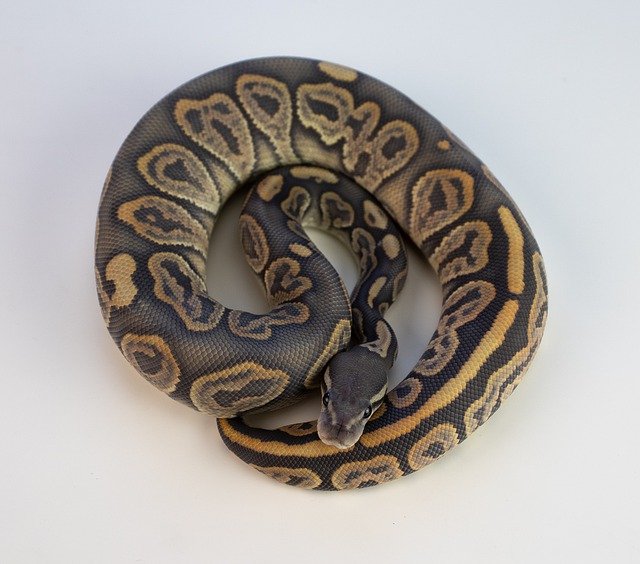
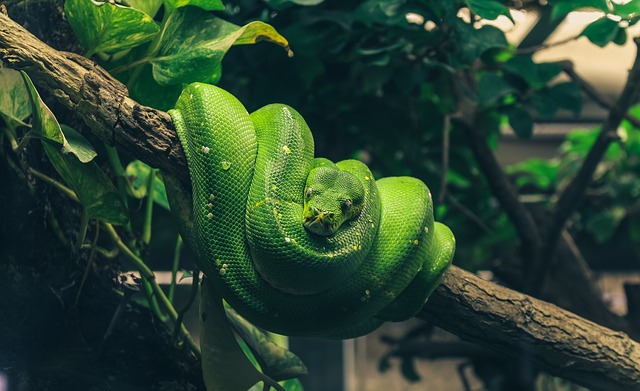



Sending...